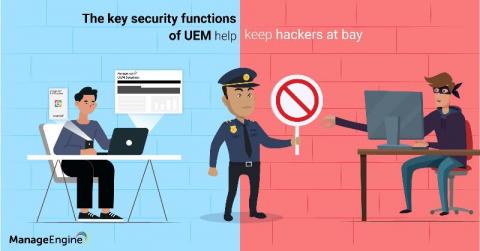Security | Threat Detection | Cyberattacks | DevSecOps | Compliance
%term
Zero Trust Approach to Threat Intelligence - BSidesSF Preview
Zero Trust is a security concept that is based on the notion that organizations should not take trust for granted, regardless of whether access attempts originate from inside or outside its perimeters. An enterprise needs to verify any attempt for connection to its systems before granting access. At the same time, the defensive layers that define the Zero Trust model should enable access for enterprise users no matter where they are and no matter what device they’re using.
Privileged Password Policy Compliance Overview: NIST 800-63, HIPAA, PCI DSS, GDPR
Privileged passwords should be used wisely. These credentials, also called secrets, provide a user with access to protected accounts, systems, networking hardware, cloud instances, and applications. Since privileged accounts also have elevated permissions, passwords to these accounts are often targeted by cybercriminals. In fact, weak, reused, and compromised passwords are the cause of 81% of all data breaches according to the Verizon 2019 Data Breach Investigations Report.
What Software Methodology Includes Security Automation?
Simply put, DevOps is a software methodology that includes security automation. Software engineering teams often equate DevOps and automation as synonymous. Most security experts believe that automation is the most quantifiable benefits for organizations. In this article, we will explore how DevOps security automation helps in achieving better software security.
Crisis Management Automation for the Entire Organization with Dispatch - BSidesSF Preview
Managing security incidents can be a stressful job. You are dealing with many questions all at once. What’s the scope? Who do I need to engage? How do I manage all of this? As an Incident Commander (IC), you have many responsibilities. You’re responsible for driving an incident to resolution as quickly as possible, creating the resources necessary to document, collaborate, and communicate while helping identify, engage, and orient the right people.
Signature and Socket Based Malware Detection with osquery and YARA
Historically, common detection methods have used file hashes (MD5, SHA1, and SHA256)—unique signatures based on the entire contents of the file—to identify malware. Modern threat actors have increased in sophistication to a point where every instance of a given malware will have a different hash, and that hash will vary from machine to machine.
Weekly Cyber Security News 14/02/2020
A selection of this week’s more interesting vulnerability disclosures and cyber security news. For a daily selection see our twitter feed at #ionCube24. Blockchain is trendy, has been for a while, and to be honest its not something I’ve had time to look at myself. All I tend to hear about are companies trying to find uses for that and/or machine learning, and the often shouted response of others saying its a solution looking for a problem outside it’s original sphere.
GLBA Compliance Checklist
GLBA refers to Gramm-Leach-Bliley Act (also known as the Financial Services Modernization Act of 1999) which aims to protect the private information of consumers. In this article, we took a closer look at GLBA requirements.
InfoSec needs a reputation overhaul
I was in a medical office the other day, and when the doctor came into the room, he needed to unlock his phone to contact a pharmacy. I couldn’t help but notice that his home screen had a photo of an infant. It was an adorable infant, and I asked “how old is your child?” The doctor reflexively answered, “10 months”, but then became a bit shocked, and asked me ‘how do you know I have a child?".
Key security functions of unified endpoint management
As part of digital transformation, the adoption of a wide range of devices for work is on the rise. A unified endpoint management (UEM) solution is capable of enforcing management policies and configurations, as well as securing endpoints. In a previous blog, we reviewed the capabilities of a good UEM solution. In this instalment, we look at UEM security features.








